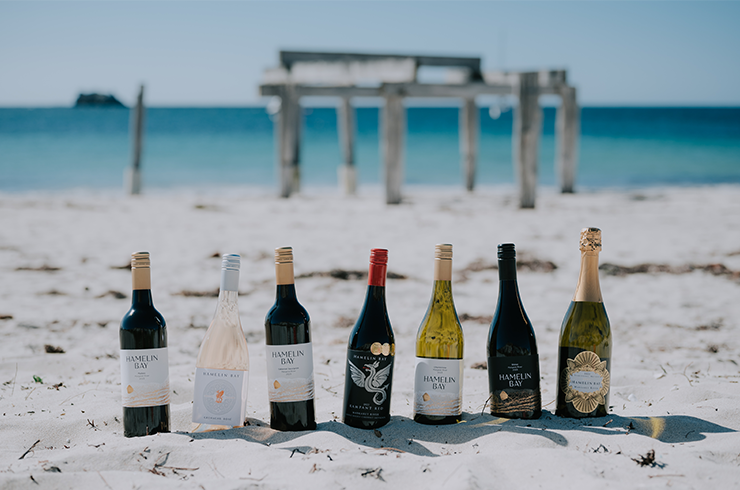The recent announcement of the removal of import tariffs on Australian wines destined for China is good news for Australian wine exporters and the wider wine industry.
“Wine is on the water… and wine is clearing at the ports. It’s terrific”, says Inca Lee, chief executive of the South Australian Wine Industry Association.
“It is welcome news, there is no doubt about it,” reports Karl Martin, CEO of Hill-Smith Family Estates. “It will be a priority for us as a business to ensure we hit the ground running and maximise the opportunity that’s in front of us.”

The background
Before the Covid-19 pandemic and the introduction of import tariffs, China was a highly lucrative market for Australian wine. Data from Wine Australia’s Export Dashboard show that volume exports to China peaked in the 12 months prior to February 2018 at 170 million litres. Value peaked in the 12 months prior to February 2020 at nearly 1.2 billion dollars, representing over 40 per cent of our total export value.Everything changed in early 2020 when the Covid-19 pandemic hit, followed by the imposition of temporary tariffs in November 2020, resulting from strained diplomatic relations between the two countries.
In March 2021, it was confirmed that tariffs between 116.2 and 218.4 per cent would remain in place for five years. The impact on the market was profound. Lee reports that in South Australia alone, the number of exporters to China plummeted from 800 to 42.
In the 12 months prior to December 2023, Australian wine exports into mainland China sat at 1.4 million litres with a value of 10.1 million dollars, a far cry from the heights seen previously. This has contributed to Australia’s wine surplus of two billion litres.
Now that the tariffs have been removed, and the Australian government has dropped its legal proceedings at the World Trade Organisation over the matter, there is promise of more normalised trade between China and Australia. The past few years have been incredibly tough for the Australian wine industry with challenging seasonal conditions, a reduction in the national crush, and downward pressure on grape prices.
The removal of tariffs is positive news, though it is not a silver bullet, and a significant investment of time and resources is required to reinstate Australia’s presence in the Chinese market. Once the market is established, it will give Australian producers some opportunity to rebalance inventories.
While the market is expected to be much smaller than previously seen, China’s sheer size, general consumer affection for Australian wine, and changing preferences of the younger generation mean it remains a market with enormous potential.
Australian wine is a tremendously good product, and we have a rare opportunity to redefine and expand the breadth of brand Australia in the mainland China market.

The mainland China market of today
While some will approach the market with caution, others have leapt to action with the news, albeit with a healthy degree of realism alongside the positivity.“We will have people in the market in the next month or so, re-establishing relationships with our distribution partners and our customers,” says Martin. “We need to re-educate our distribution partners and sales teams in China. It is going to take some time.”
With Australian wines largely absent from the market, Chinese consumers will have broadened their tastes with wines from other countries.
That said, Peter Bailey, manager of market insights at Wine Australia, says research shows that despite being largely absent from the market over the past three years, Australian wines are still held in high regard, and our wines have a strong premium image.
However, the trading landscape has changed, e-commerce is now more important than ever, and global shipping disruptions add to the complexity.
Bailey speaks of the Chinese market changing before we exited the market. Today, total wine imports are now ‘a third of the size’ of what they were five years ago. The consumption of local Chinese wines has also fallen significantly.
Bailey reports that the pandemic and its associated lockdowns, the slowing of the Chinese economy, and changing consumer behaviour, such as less dining out and cost of living pressures, have all had an impact. Wine style preferences are also changing, with white and sparkling wine having potential for growth alongside the red varietal stalwarts of shiraz and cabernet sauvignon.
“Health, wellness and moderation trends are also evident in China,” says Bailey, creating some “opportunities for lower alcohol/no alcohol products.”

Support for Australian exporters
Wine Australia’s regional manager for Asia Pacific, Sarah Roberts, says that the current priority is to support exporters, either to get back into the market or to access trade to get into the market. Trade and consumer education will be key pillars to build awareness.A good starting point for producers is Wine Australia’s Export Guide to China. Roberts speaks of several Wine Australia initiatives to support local producers, including having a large pavilion at Vinexpo Asia at the Hong Kong Convention and Exhibition Centre between 28 to 30th May 2024 with 63 exhibitors.
Wine Australia is also running a four-city China Roadshow from the 20 to 28th August to help re-build familiarisation with the China of today. There is also the China International Import Expo in Shanghai and Prowein Shanghai, both held in November 2024.
The South Australian Wine Industry Association can help with advice, including directing members to appropriate Trade Start Advisors. They are also keen to facilitate the exchange of shared experiences gained on the ground in China. Lee speaks of the 1.85-million-dollar China Re-engagement Support Package announced by the South Australian Government involving promotional campaigns, trade visits, distribution of in-market insights and the appointment of a Shanghai-based wine export advisor.
In partnership with Global Victoria, Wine Victoria will run the Victorian Wine Export Program to support Victorian wine exporters, including those exporting to China.
Western Australia has announced a $500,000 package to help promote WA wines and help exporters re-establish trade with China.
And NSW is planning events and in-market activations, including a Chinese Buyers Mission to NSW and a roadshow re-introducing the NSW wine industry to Chinese importers and distributors.
Halliday Wine Companion is currently exploring reentering the China market. This was an important venture, prior to 2020, which saw Halliday support wineries who were navigating the Chinese market through tours and key trade events in China and translation of content, which included the annual Companion and Halliday IP (including points, tasting notes and winery reviews).






